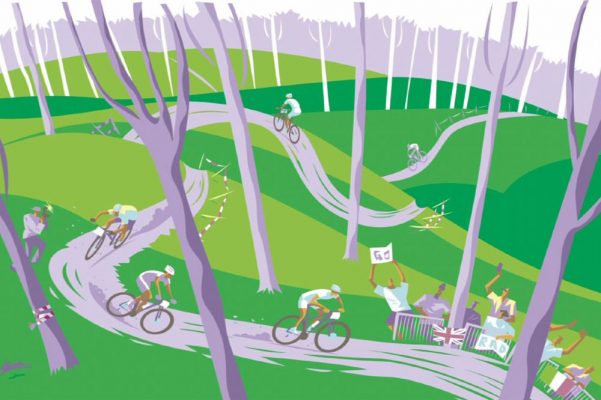Crowds of 25,000 and growing online audiences mean cross country is exciting again.
With Red Bull reporting ever-increasing audiences for its coverage of world class cross-country racing, it seems there is a distinct resurgence happening among spectators that have traditionally been dwindling.
>>> Why is fitness such a taboo subject in mountain biking?
Crowds of 25,000 have even been lining the courses of Europe – so why the sudden interest?
Lee Craigie, a veteran of the pain and elation of the women’s circuit, has seen many changes take place in her career to help make it more spectator-friendly. “Historically XC racing has been hard to watch and expensive to televise, but they have got on board with the media and understand it a lot better now,” she says. “With shorter laps and figure-of-eight courses, as a spectator you can really get engaged. As the laps go by you can get emotionally involved watching folk getting tired, you can see tactics at play.”
Grimacing, she recalls: “I have never done anything harder. You put yourself in a place where you are on the edge of human function – so it’s interesting from that point of view too!” Her laugh betrays perhaps some relief at recently moving from cross-country into other disciplines of the sport.
So, as a spectator, more than in other disciplines, you can expect to see every human emotion and frailty played out in front of you: pain, hardship, concentration, guile, strength, exhaustion and skill. But, it has to be said, mostly pain.
>>> The UCI revives the Cross-Country Eliminator (XCE)
The drama this generates can be edge-of-the-seat stuff. With those new spectator and media-friendly courses punching out laps in 12-14 minutes on the World Cup circuit, you barely have enough time to wonder if Julien Absalon looked tired or Nino Schurter‘s tyre looked soft in the last lap, before they are round again, legs bursting with the effort and faces thick with mud.
Ric McLaughlin, Red Bull TV presenter at every World Cup over the last few years, loves the excitement of XC racing: “It is almost three races in one: the opening laps are frantic where they jostle for position, the middle laps they tend to conserve energy. the last laps are where the punching and fighting takes place, where they start attacking each other. In a good race someone doesn’t just head off the front and that’s it.”
Punctures, mechanicals and minor crashes don’t necessarily mean the of a rider’s day either – they can add to the tension and turn a race on its head when least expected.
Grant Ferguson, the UK’s number cross-country hope on the world stage, recalls: “The first round in Australlia was a classic where Absalon punctured in the first lap. He rode from the 30s or 40s back to third, and they covered it well on the TV. You could just see him hunting them down, coming back from that.”
Even the courses are getting more technical, and when you consider theses guys are tackling puckering descents and ball-breaking rocky climbs on super light hard tails with skyscraper heights, you really have to take your hat off to them.
So if you are looking for some real life gritty drama this year, tune into your next cross-country race. Or better still, dig out your cow bells and get behind the tape to cheer them on yourself.




